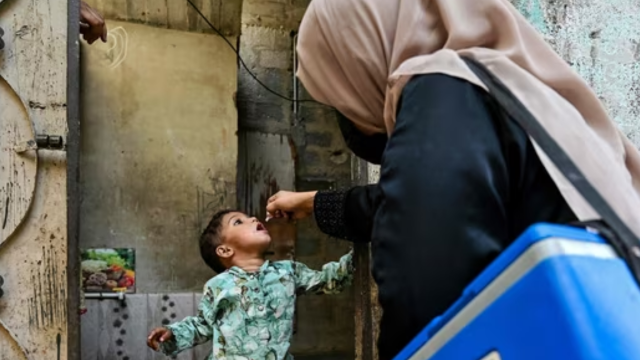October 25, 2025 : marks World Polio Day, a global observance dedicated to raising awareness about poliomyelitis, commonly known as polio, and the ongoing efforts to eradicate this crippling disease. Polio is a highly infectious viral disease that primarily affects children under five, causing paralysis and, in severe cases, death.
Polio spreads through person-to-person contact, often via contaminated water or food, and can quickly infect communities with poor sanitation. Symptoms can range from mild fever and fatigue to severe neurological complications leading to permanent disability. Although polio has been largely eliminated in many countries, pockets of the disease still exist in regions with low vaccination coverage.
Global efforts to eradicate polio have been ongoing for decades. The Global Polio Eradication Initiative (GPEI), launched in 1988, has successfully reduced polio cases by over 99%, saving millions of children from paralysis. Key strategies include mass immunization campaigns, routine vaccination, and rapid response to outbreaks. Health workers often travel to remote areas to ensure every child receives the polio vaccine, reflecting a massive coordinated effort across nations.
Despite progress, challenges remain. Conflicts, political instability, and misinformation about vaccines have hindered eradication in certain areas, particularly in parts of Afghanistan, Pakistan, and some African regions. Public health experts emphasize the importance of continued vigilance, community engagement, and robust vaccination drives to prevent resurgence.
World Polio Day also highlights the achievements in public health, including innovations in vaccine delivery and global coordination. Oral polio vaccines, combined with inactivated polio vaccines, have proven highly effective, while surveillance programs ensure rapid identification of any new cases. Countries that have eliminated polio continue to maintain high immunization coverage to prevent re-emergence.
In addition to vaccination, education and awareness campaigns play a critical role in combating polio. Governments, NGOs, and health organizations work together to inform parents about the importance of completing the full vaccination schedule. Community mobilization and outreach programs have significantly increased immunization rates, especially in underprivileged and hard-to-reach areas.
The 2025 observance emphasizes that the fight against polio is not over. While fewer countries report cases today, the risk of outbreaks persists if immunization coverage declines. World Polio Day serves as a reminder of the collective responsibility to protect children and ensure a polio-free future.
In conclusion, World Polio Day 2025 is a call to action to continue global eradication efforts, maintain vaccination coverage, and educate communities about the dangers of polio. The combined efforts of governments, health organizations, and local communities are crucial to finally eliminating this debilitating disease worldwide.
Summary
World Polio Day 2025 emphasizes awareness, vaccination, and global efforts to eradicate polio, a crippling viral disease affecting children, while highlighting challenges and the importance of sustained immunization campaigns.


